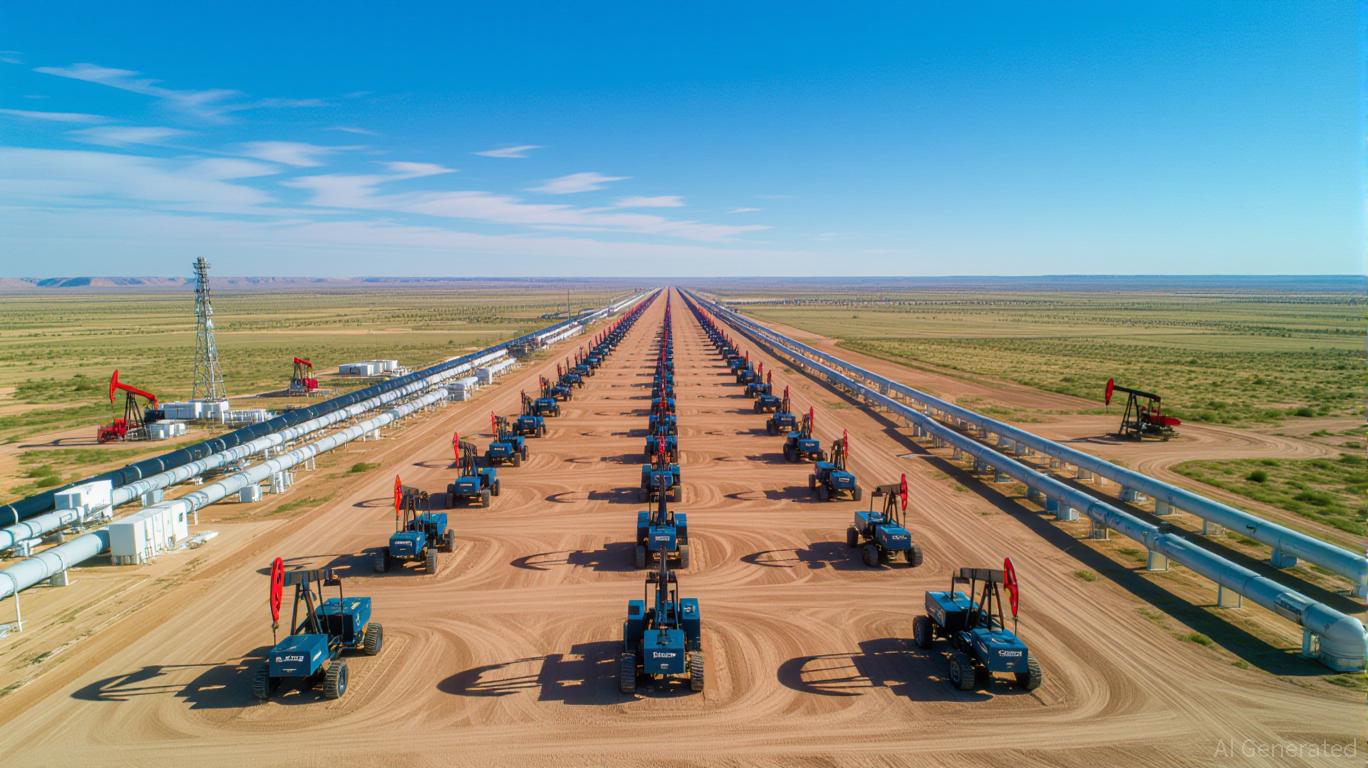
In the ever-shifting landscape of energy markets, Granite Ridge Resources (NASDAQ: GRNT) has emerged as a standout performer, leveraging strategic cost controls, robust hedging, and disciplined capital allocation to navigate the dual challenges of rising input costs and volatile commodity prices. Its Q2 2025 earnings call painted a compelling picture of a company not just surviving but thriving in a high-stakes environment. For investors seeking resilience and growth, Granite Ridge’s playbook offers a masterclass in operational efficiency and margin preservation.
Operational Efficiency: Turning Challenges into Opportunities
Granite Ridge’s Q2 results underscored its ability to optimize costs even as industry-wide pressures mounted. Lease operating expenses (LOE) rose to $7.00 per barrel of oil equivalent (BOE), up from $6.50 in Q2 2024, driven by elevated saltwater disposal costs in the Permian Basin. Yet, this increase was modest relative to the 37% year-over-year surge in production to 31,576 BOE/day. The company’s focus on high-quality inventory—particularly in the Permian and Appalachian Basins—allowed it to maintain a gross profit margin of 83.7%, a testament to its ability to extract value from its assets.
The Permian Basin, a cornerstone of Granite Ridge’s strategy, delivered standout performance. Wells came online ahead of schedule and outperformed forecasts, with 4.4 net wells turned in-line (TIL) in Q2. Meanwhile, the Appalachian Basin’s Utica shale operations added 0.4 net wells TIL, with production exceeding expectations. These results highlight the company’s operational agility and its partnerships with proven operators, which have minimized downtime and maximized returns.
Hedging as a Strategic Shield
Commodity price volatility remains a wildcard for energy firms, but Granite Ridge’s hedging program is a critical differentiator. The company has locked in 75% of its production through a mix of collars and swaps, with oil hedged at a floor of $61.04 per barrel and a ceiling of $77.87. As of August 7, 2025, the realized oil price stood at $61.41—near the floor of its hedging range—yet the company’s hedging instruments cushioned the blow of a 20% decline from the prior year’s average of $77.84. This strategic foresight ensured stable cash flows, even as broader oil prices dipped.
Natural gas, which accounts for roughly half of Granite Ridge’s production, was similarly protected. The company secured 6.26 billion cubic feet of production through collars and swaps, mitigating exposure to weak Appalachian Basin pricing. This dual-hedging approach—covering both oil and gas—creates a natural hedge against regional and commodity-specific volatility, a rarity in the sector.
Capital Allocation: Quality Over Quantity
Granite Ridge’s capital discipline is another pillar of its success. For 2025, the company allocated $400–420 million in capex, with $120 million earmarked for acquisitions. These funds are being directed toward high-risk-adjusted returns, particularly in the Permian Basin, where the company plans to operate four rigs by 2026. The acquisition strategy is equally compelling: Granite Ridge added 74 net locations in Q2 at an entry cost of $1.7 million per location, securing three years of inventory at a fraction of the cost of organic drilling.
The company’s leverage ratio of 0.8x net debt to adjusted EBITDA underscores its financial flexibility. With a borrowing base increased to $375 million and plans to tap credit markets in the fall, Granite Ridge is poised to fund growth without overextending its balance sheet. This contrasts sharply with peers burdened by higher leverage, making Granite Ridge a safer bet in a potential downturn.
Peer Comparison and Market Position
While direct peer data is sparse, Granite Ridge’s metrics align with industry leaders. Its LOE of $7.00/BOE and G&A of $2.96/BOE (excluding non-recurring items) are in line with mid-sized E&Ps operating in similar basins. However, its ability to grow production by 37% while maintaining cost discipline sets it apart. The company’s focus on non-operated partnerships and acquisitions—rather than high-cost organic drilling—further enhances its efficiency.
Investment Case: Positioning for the Next Upcycle
Granite Ridge’s Q2 results make a compelling case for investors to act before the next commodity upcycle. With 75% of production hedged through 2026, the company is insulated from near-term price swings. Its strong balance sheet, 9% dividend yield, and aggressive production growth (31,000–33,000 BOE/day in 2025) position it to capitalize on rising energy prices.
Moreover, the company’s strategic focus on the Permian and Appalachian Basins—two of the most capital-efficient regions in the U.S.—ensures scalability. As private equity capital dries up and smaller projects become more attractive, Granite Ridge’s acquisition-driven model will likely outperform peers reliant on organic growth.
Conclusion: A Resilient Play in a Cyclical Sector
Granite Ridge Resources has demonstrated that operational excellence, strategic hedging, and disciplined capital allocation can drive outperformance even in a volatile market. For investors, the company represents a rare combination of margin resilience and growth potential. As the energy sector braces for the next upcycle, Granite Ridge’s proactive approach to risk management and its focus on high-quality assets make it a compelling long-term holding.
Investment Recommendation: Buy Granite Ridge Resources (NASDAQ: GRNT) ahead of the next commodity upcycle, with a target price of $6.50 per share by Q4 2025, reflecting its production growth, hedging tailwinds, and expanding inventory.
